‘The longer an audio ad, the less effective’

Creative standout drops by 1% for every extra 10 words in an audio ad, which could lead to lower conversion rates, an analysis of 13,000 spots has revealed.
In research with “a never before seen dataset” seen by The Media Leader, Jason Brownlee, founder of Colourtext, has analysed 10,000 campaigns across linear, streaming and podcasts covering 615 major brands in 22 advertiser categories between 2019 and 2021 included in Audiotrack’s database; the audio distribution platform, run and managed by Adwanted’s Mediatel.
The ad copy for 13,000 individual ads between 2020 and 2022 was also transcribed, allowing for quant semiotic analysis in to different types of calls to action, selling propositions, emotive and temporal language, brand mentions and number of words used.
Brownlee told The Media Leader: “Radio, and now more broadly, all audio was always booked as a bit of a last minute, leftover budget, not huge risk channel. The same degree of knowledge and understanding about how to make this media channel work creatively [like TV] has never really been invested in by the industry on both sides of the fence.
“That means there’s a knowledge deficit in terms of understanding how audio works. So what I think we’ve got here, certainly with the word count, is a proxy for good creative strategy.”
Excess words cost advertising effectiveness
Brownlee merged effectiveness data from Radiocentre’s Big Audio Datamine with the Audiotrack dataset to discover the impact word count had on the effectiveness on 22 transcribed audio campaigns.
Across the database, the average word count in an audio ad was discovered to be 169, with finance brands netting the highest number of words on average with 180 and food & drink the lowest with 155.
The data revealed that for every 10 extra words that go into ad copy, creative standout was expected to fall by 1%.
Creative standout in audio was strongly linked to website visits, and “go online” was found to be a call to action used by more than a quarter of advertisers in the research.
If you compared a target word per minute in an ad of 147, which represented zero terms and conditions, to an ad with 195 words, or long terms and conditions, creative standout dropped from 39.6% to 32.9%.
This translated to a modelled drop in website response rate from 1.8% to 1.3%, and the number of projected web referrals or visits went down from 598,000 to 438,000.
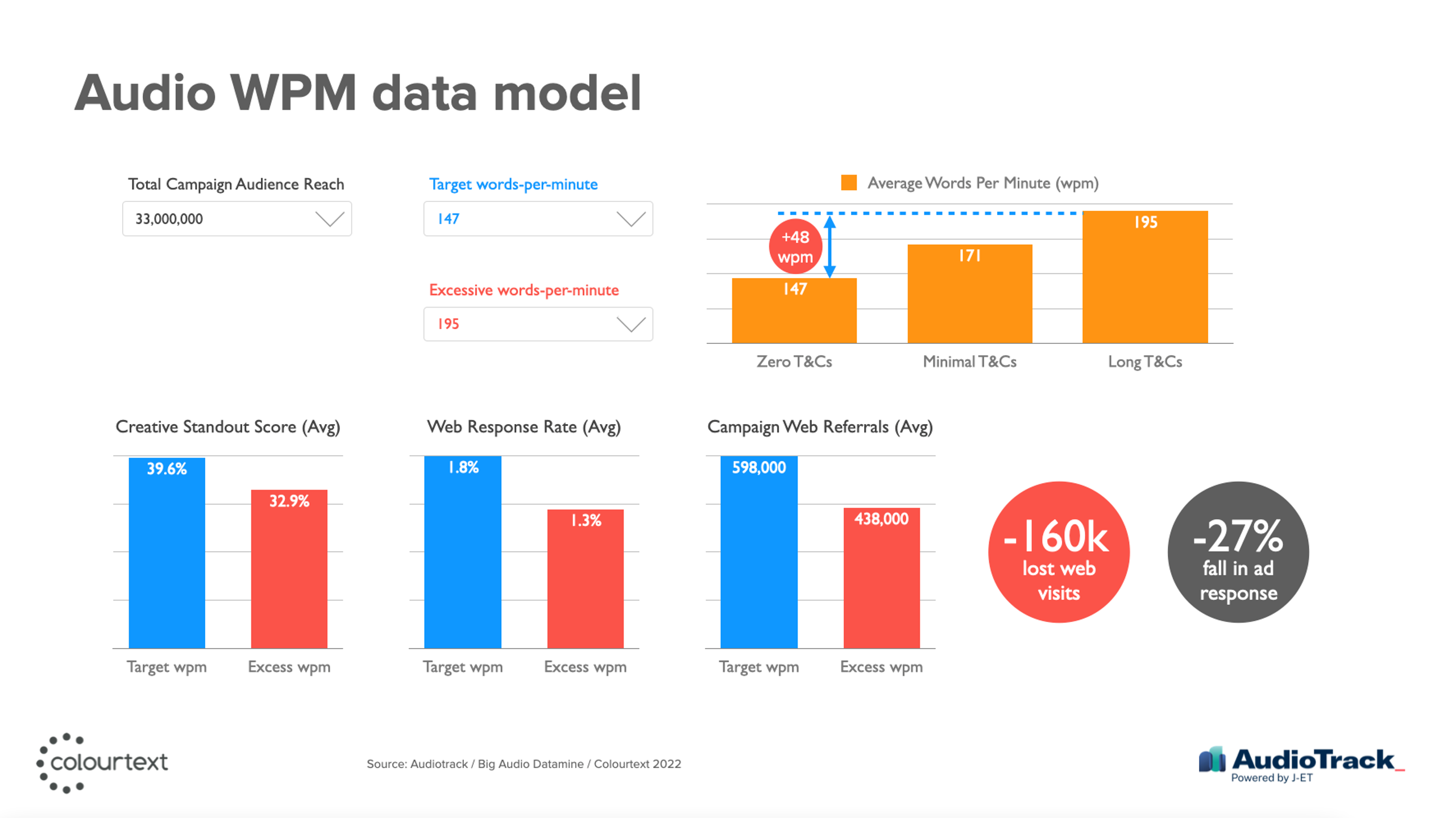
Brownlee explained: “When you break all that down, just because of 24 extra words in a 30 second ad, you’ve lost 160,000 visits, which is the equivalent to a drop of 27% in your ad response.”
He said this loss was “really significant” especially when bearing in mind how hard many direct-to-consumer brands are working get people to go online.
Brownlee added: “When you think what they are spending on campaigns and when you think about their conversion rates, they will already have knocked off a third of the potential of their ad investment by putting in too many words. The revenue loss could come close to the cost of the campaign.”
Earlier this year, Global announced it would introduce an eight-second cap on terms and conditions on all ads on its stations in December following a successful trial with motor brands in March.
Calls to action and selling propositions in audio
Through the ad transcription for 13,000 ads between 2020 and 2022, Brownlee identified the percentage of brands using specific words as calls to action, and its prevalence amongst different categories.
“Available now” was the most popular call to action with 39% of brands using this phrase, followed by “get…” with 28%, and “go online” with 26%.
In retail and finance, the call to action to “go online” rose to 50%.
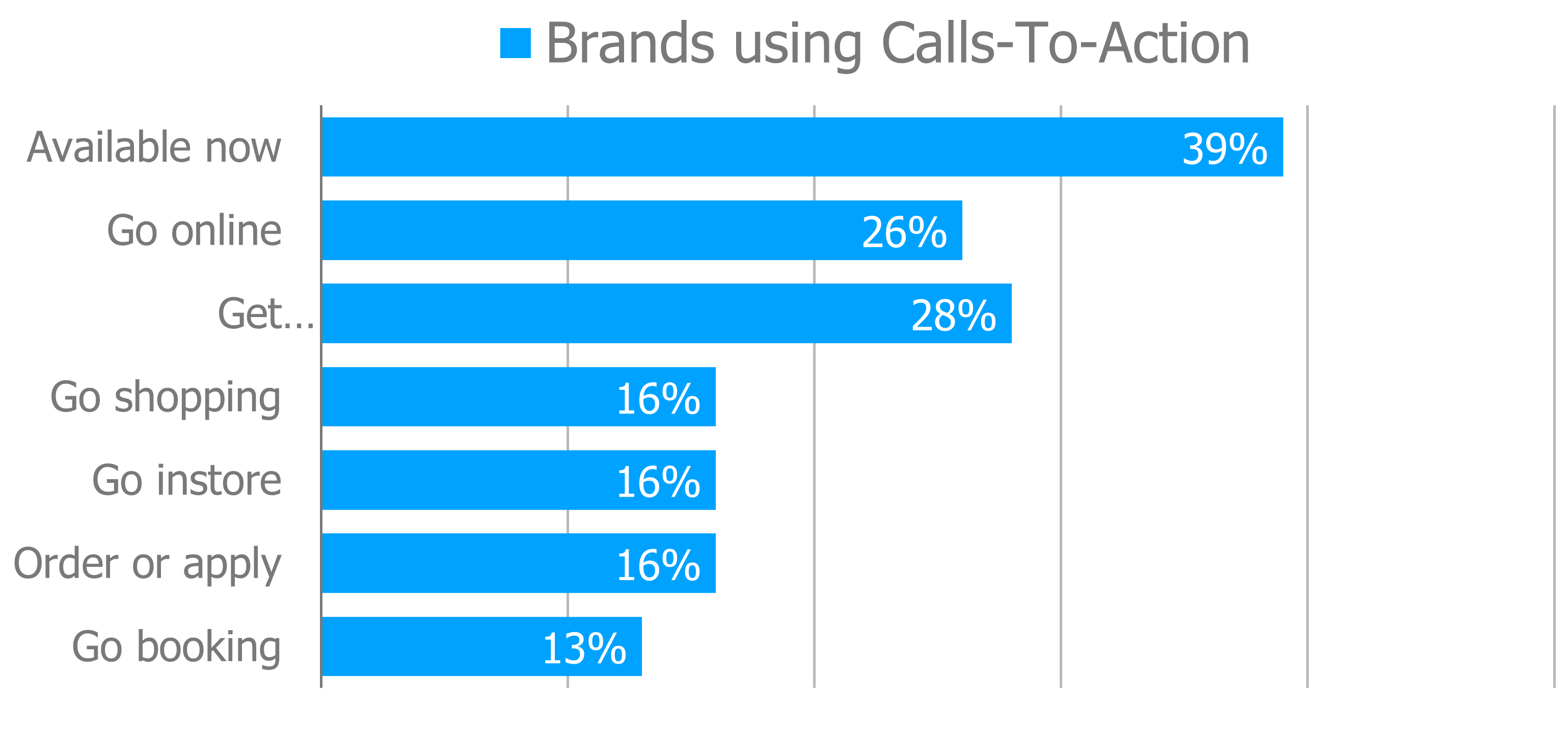
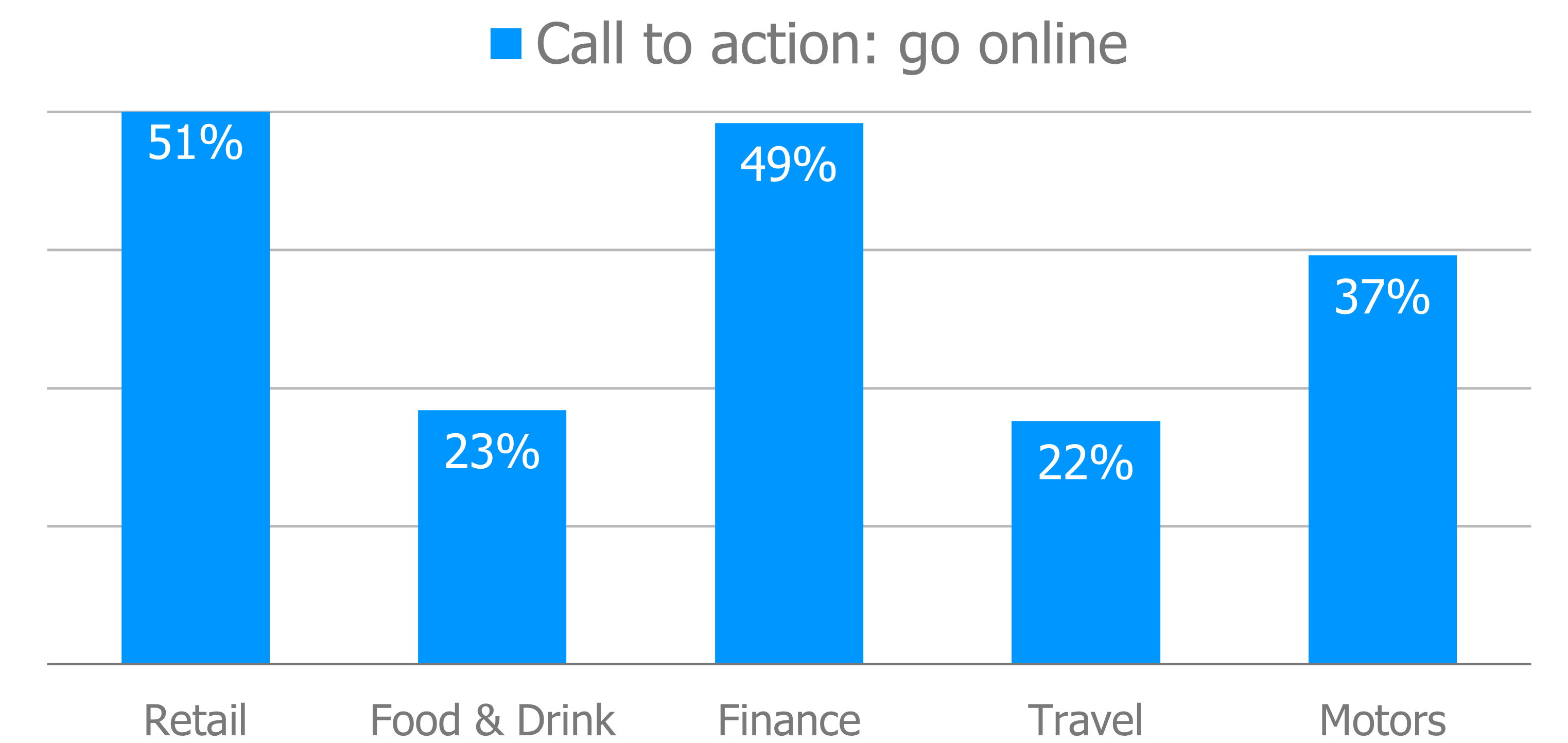
Brands using selling propositions tended to use news and innovation as the hook (40%), followed by help and aid (34%), which tended to be used by the UK Government and charities, and guarantees and protection (28%), often used by finance and motor brands in particular.
Retail, travel or motor brands were found to be more likely than food or finance brands to be using offers, sales and discounts in their audio ads to entice people.
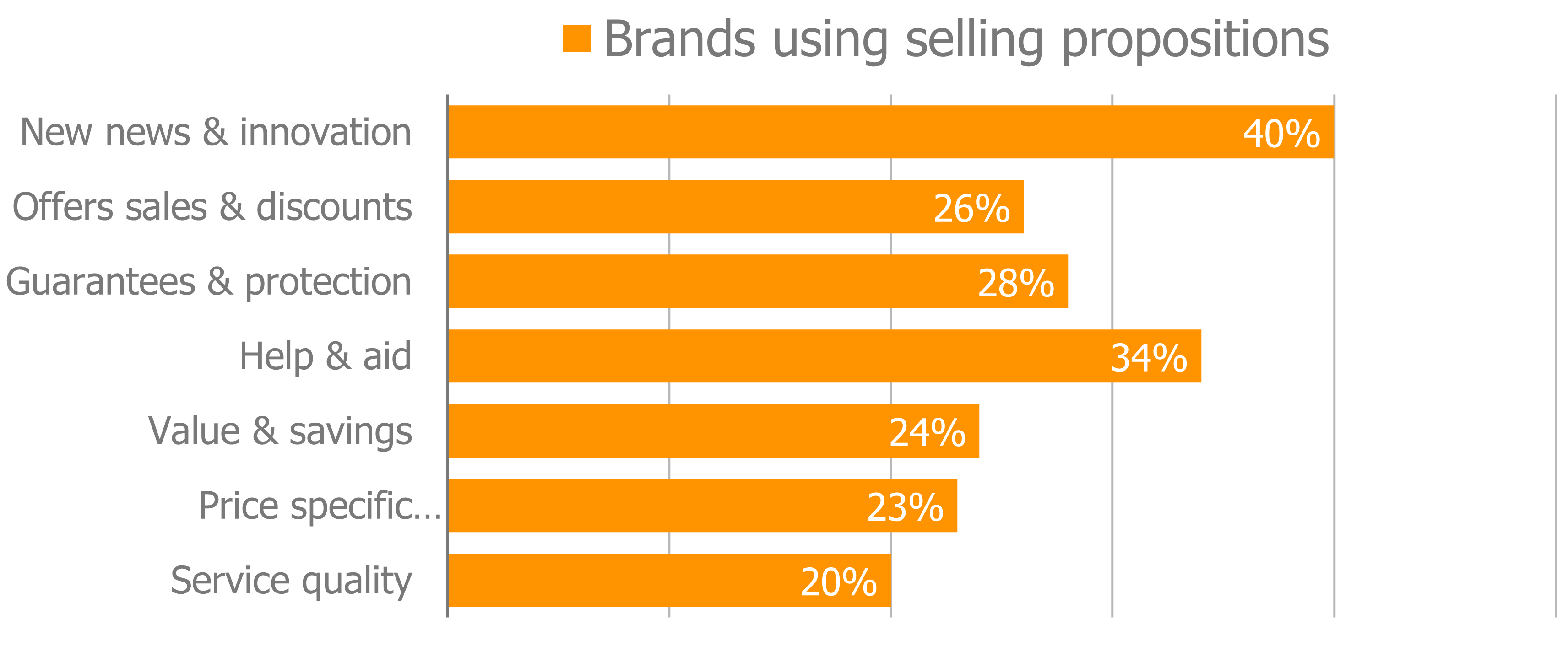
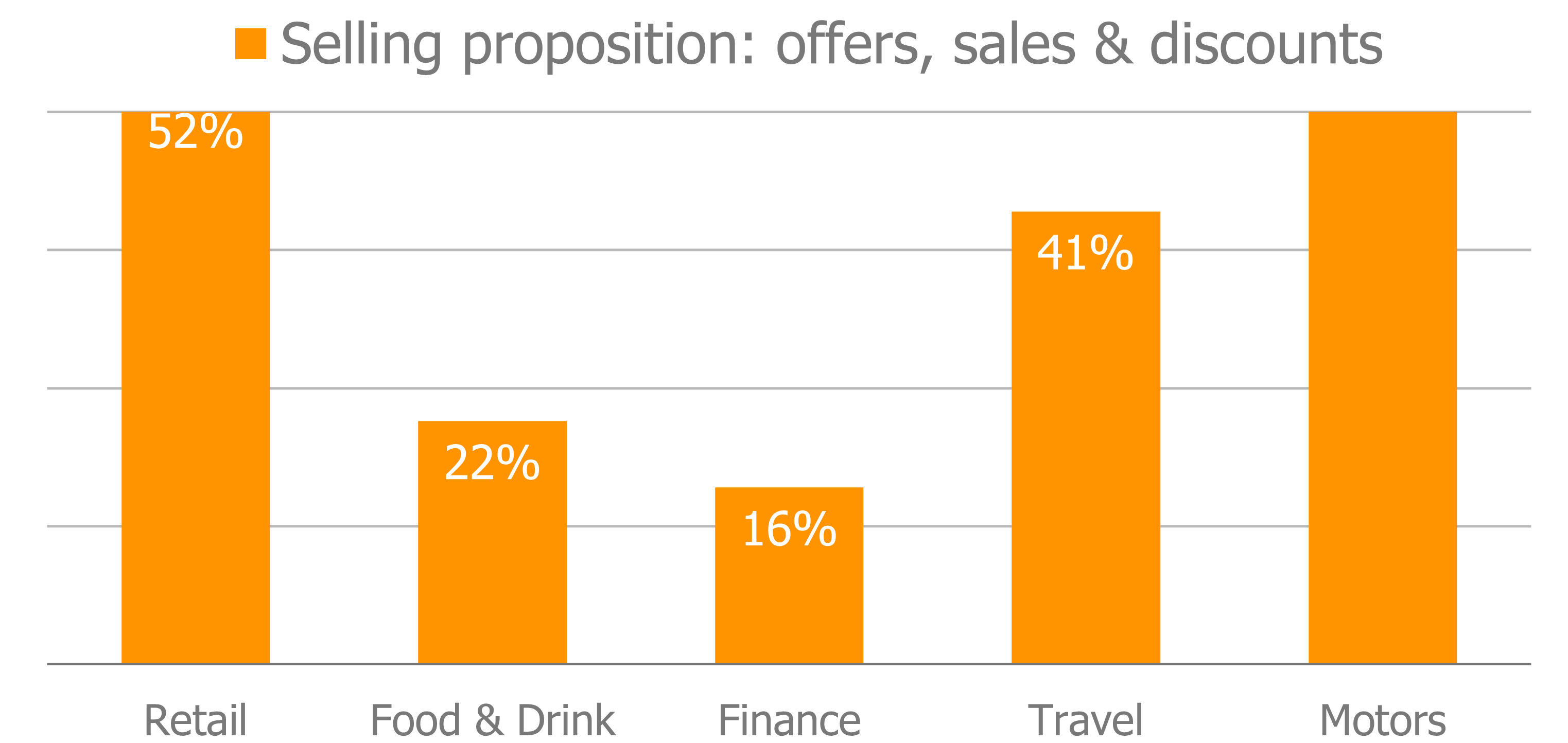
Brownlee also highlighted radio was an “immediate and temporal medium” with 39% of brands using “today” or “tomorrow” in their ad copy, 28% talking about seasonality like Christmas or summer, and 25% speaking about specific months of the year.
Another element pulled out by the linguistic analysis was the quality or emotional tonality of language, as 60% of brands use “boosters” or “maximisers” in their copy like “the best”, “greatest”, “biggest”, “fastest”, “smoother”.
A third of brands spoke to how much consumers would “like or enjoy” the experience of their brand, while under a quarter told consumers “you must” do something and 17% used the phrases “pretty good” or “incredibly good”.
With these findings by category, Brownlee described that brands could ask themselves if they wanted to follow the conventions or create a point of distinction.
Brand names in audio ads
On average, the study found the first mention of a brand name happens 37% of the way into an ad, and brands tended to mention their names twice in one spot.
There was a lot of variance by category in when a brand name was first mentioned, with retail brands on average mentioning their brand name 35% of the way in and finance brands coming later at 43% of the way in.
Top always-on audio brands
The top five categories advertising on audio by brand count were revealed to be retail, food & drink, finance, motors and travel.
Food & drink and finance had grown the most over the last three years, while motors and travel either stayed flat or dropped slightly over the pandemic.
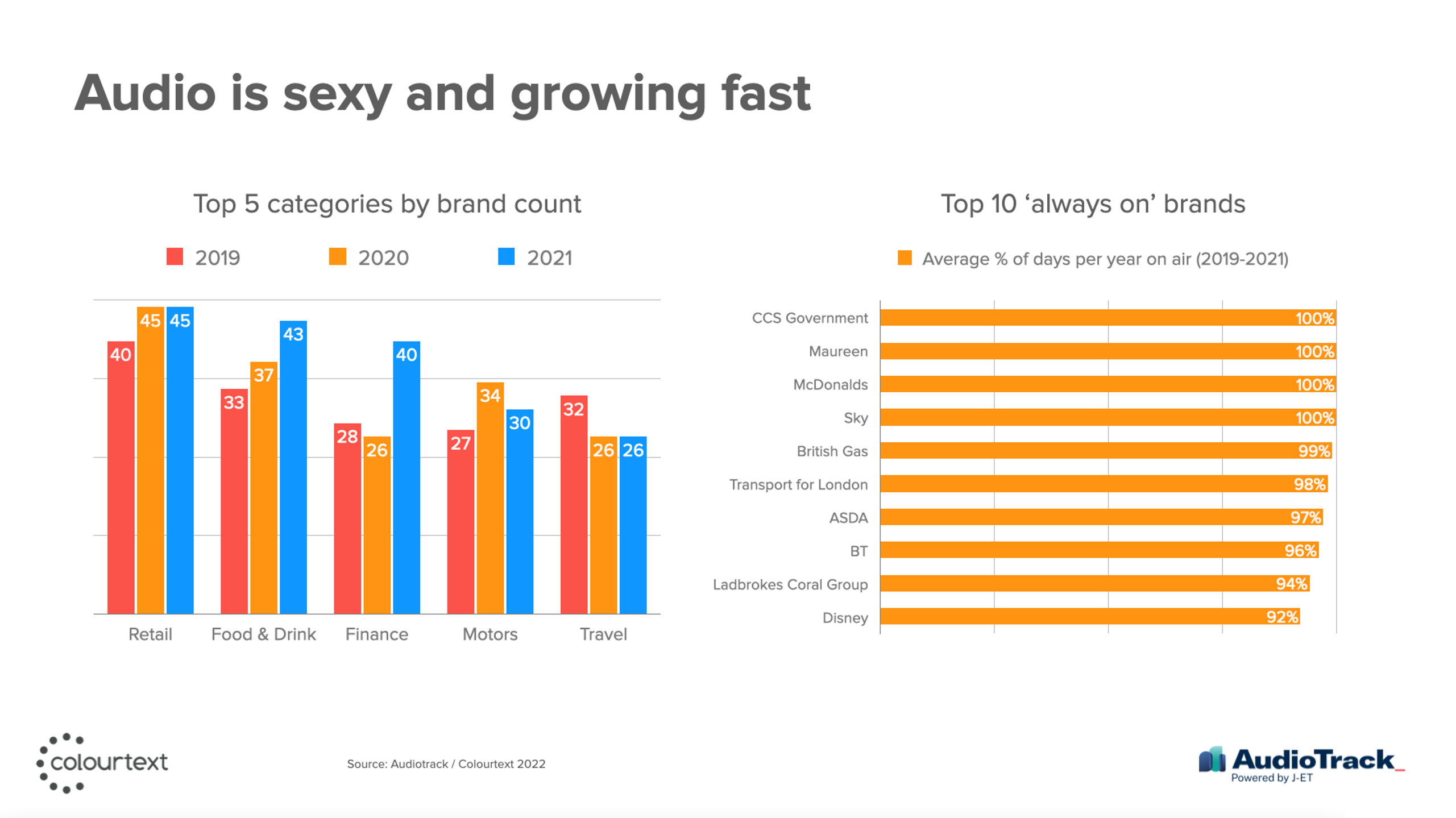
The top 10 “always-on” audio brands were shown to be on air on average 98% of all days in the year, which Brownlee called “a huge vote of confidence in audio as a channel”.
The UK Government, Maureen (the 118 directory enquiry service), McDonalds and Sky were on air 100% of the time over the last three years.
Increasing adoption of podcasts, but more should be using podcast-specific copy
Nearly half of advertisers (47%) are using podcasts in 2021 compared to 2019, an increase of 4 percentage points on 2019.
On average the top five categories used podcasts for 97% of their active audio days, showing that when these brands are on radio, they are typically also on podcasts.
Most brands (77%) used the same copy on linear and podcast for their ads, nearly half (42%) sometimes used podcast specific copy while 8% used linear or podcast-specific copy only.




